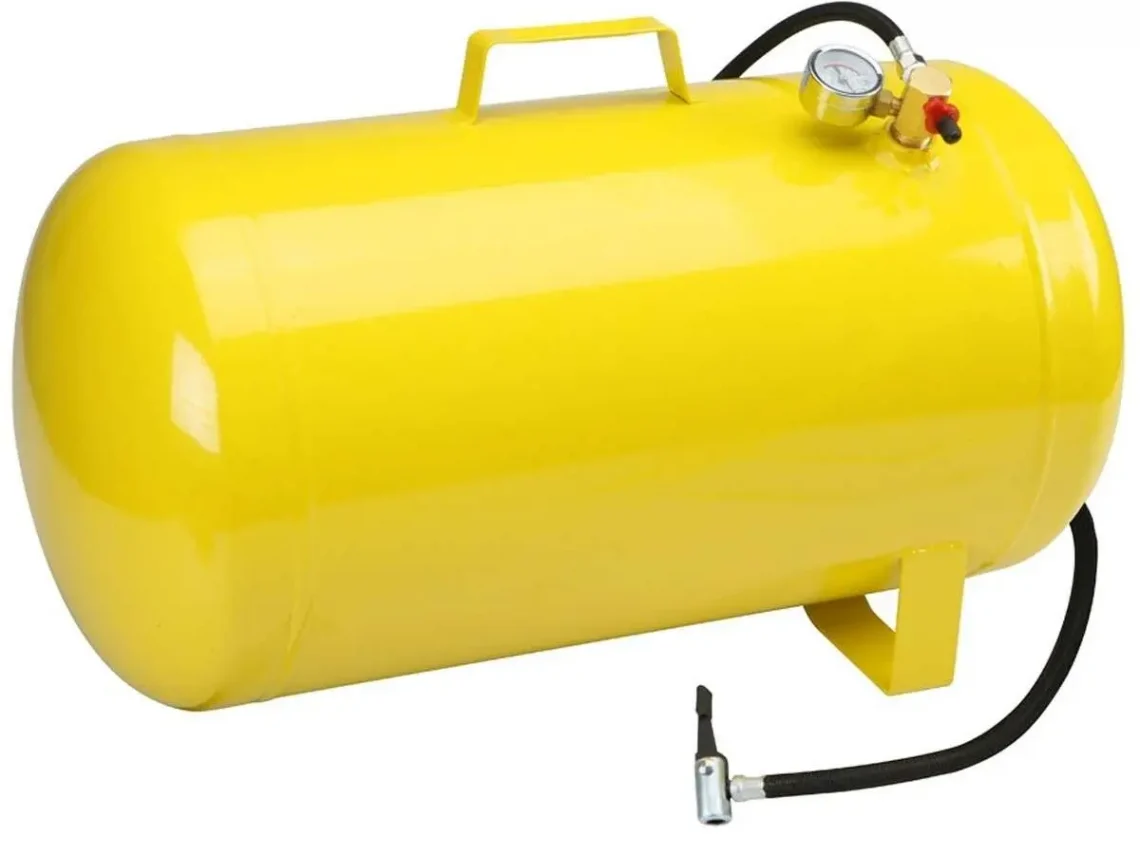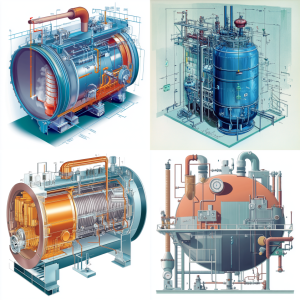
Table of Contents
Toggle
In its simplest form, a pressure vessel is a closed container designed to hold gases or liquids at a pressure significantly different from the surrounding atmospheric pressure. Think of it as a strong, sealed container capable of withstanding immense internal pressure. These vessels come in various shapes and sizes, from small compressed air tanks to massive reactors used in chemical plants.
What distinguishes a pressure vessel from an ordinary tank is its ability to contain fluids under pressure safely. This requires robust construction and careful design. Typical materials used in the construction of pressure vessels include steel, particularly carbon steel and alloy steel, and in some cases, stainless steel. The specific material choice depends on factors such as the operating temperature, pressure, and the properties of the fluid being contained.
Now, let’s connect this to the context of a boiler. In a boiler system, the pressure vessel plays a crucial role in containing the water as it’s heated and transformed into high-pressure steam. This steam is used to drive turbines, heat buildings, or power other industrial processes. The pressure vessel within a boiler isn’t just a container; it’s an integral part of the energy conversion process.
A pressure vessel is more than just a hollow shell; it’s a carefully engineered piece of equipment with several key components working together. Let’s explore some of the most important:
Each component plays a vital role in the overall function and safety of the pressure vessel. Understanding their purpose is essential for anyone involved in the operation or maintenance of boiler systems.
Safety is paramount when dealing with pressure vessels. The consequences of failure can be catastrophic, including explosions, equipment damage, and, most tragically, injuries or fatalities. Several factors can contribute to pressure vessel failure, including:
To mitigate these risks, regular inspection and maintenance are essential. This includes visual inspections, non-destructive testing (NDT) methods like ultrasonic testing and radiography, and pressure testing. Adherence to safety standards, such as the ASME Boiler and Pressure Vessel Code, is also crucial. These standards provide guidelines for the design, fabrication, inspection, and testing of pressure vessels to ensure their safe and reliable operation.
The pressure vessel remains a critical component within a boiler system, responsible for safely containing and regulating high-pressure steam. Its robust design, comprised of key components like the shell, heads, and nozzles, ensures its ability to withstand immense forces. Understanding the operational principles and the importance of adhering to strict safety standards, including regular inspections and maintenance, are paramount to preventing catastrophic failures and ensuring the safe and efficient operation of boiler systems across various industries.
Red River specializes in the design and manufacturing of pressure vessels. We also fabricate related items such as prefabricated spools and skid packages.
Reach out to us today and experience the Red River difference. Where American-made products and American Values come together, we care more.
This is to release excess pressure and prevent overpressure scenarios automatically.
Inspection frequency depends on regulations and the vessel’s operating conditions. Consult a qualified inspector.
A set of standards governing the design, fabrication, and inspection of boilers and pressure vessels to ensure safety and reliability.
Corrosion, erosion, overpressure, fatigue, and improper maintenance.
Carbon steel, alloy steel, and stainless steel are common choices, selected based on operating temperature and pressure.
Shell and tube heat exchangers, steam drums, and flash tanks
With proper maintenance and inspection, a pressure vessel can last for 20 to 30 years.
In the realm of industrial solutions, Red River emerges as a pioneer, offering a diverse range of custom-engineered products and facilities. Among our specialties is the design and production of Custom/OEM Pressure Vessels, meticulously crafted to meet individual client requirements, ensuring performance under various pressure conditions. Our expertise extends to the domain of prefabrication, where Red River leads with distinction.
The company excels in creating prefabricated facilities, modules, and packages, reinforcing its stance as a forerunner in innovation and quality. This proficiency is further mirrored in their Modular Skids offering, where they provide an array of Modular Fabricated Skid Packages and Packaged equipment. Each piece is tailored to client specifications, underlining their commitment to delivering precision and excellence in every project they undertake.